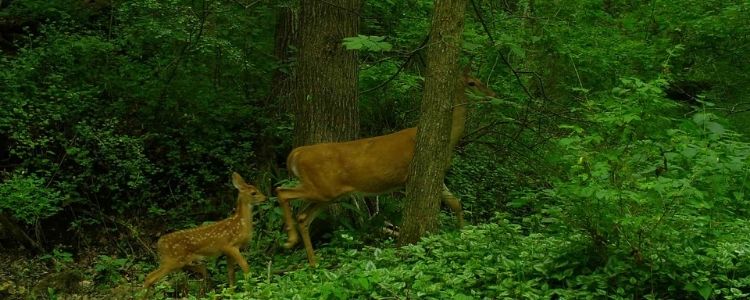In the Oak Savanna Woodland, it is damp and cool. There are large trees that can be home to birds, squirrels, frogs, or other creatures. Birds make their homes in the tree trunks or nest on top of branches. Whereas bugs live in the trees like beetles, tree frogs, and slugs that can live under the bark of the trees. If you explore our trail through the Oak Valley, you can find evidence of animals using this space as a habitat, and it’s not just in the trees.
Continuing on our habitat hike, there is a chert creek that flows through our property. It is the main source of natural water on our grounds and so many animals use it. This creek is an intermittent stream meaning that there is not always water in it all the time. The amount of water is based on how much it has rained, or how much snowmelt we have. After a hard rain, the creek has lots of flowing water. If there is no rain for a long time, it can get dry, but there are usually a couple of places you still can find pools.
When the stream is flowing, there are no fish in it. However, it a water source for many animals. In the dryer months, it becomes a place for insects to live or frogs to chill out. Sometimes, a small ecosystem forms from a puddle along the creek when the water isn’t flowing.
Sinkholes are not often thought of as a good habitat for animals. However, red-winged blackbirds nest in the ground and can be seen using sinkholes for their nests during the summertime. The male bird will “guard” the ground nest by flying over the area in a hexagonal pattern, alerting the female when danger is near.

